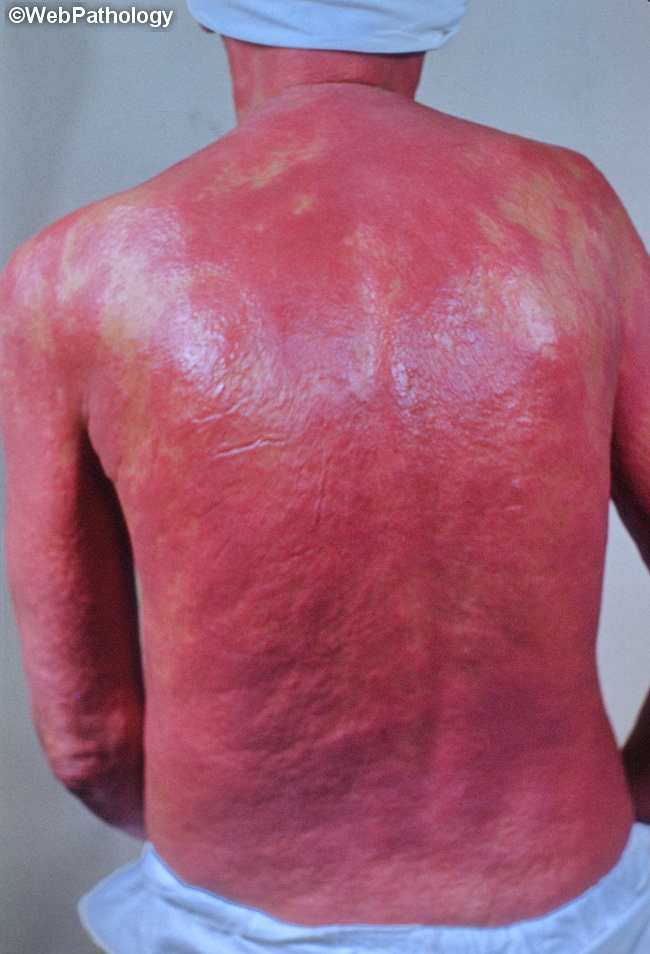Sezary Syndrome : Clinical Features


Comments:
Sezary syndrome (SS) - Clinical Features: SS is usually seen in the middle-aged and elderly patients, but can sometimes occur in young adults. It shows male predilection and is more common in Blacks. Patients present with erythroderma, palmar and plantar hyperkeratosis, intense pruritus, alopecia, nail dystrophy, ectropion, hepatomegaly, and lymphadenopathy. Erythroderma refers to diffuse erythema involving >80% of the skin surface, with or without scaling. SS is not the only cause of erythroderma. It may be seen in a variety of benign and malignant conditions. Benign causes of erythroderma include psoriasis, atopic and contact dermatitis, drug eruptions, and pityriasis rubra planaris. Malignant causes include other lymphomas such as B-cell chronic lymphocytic leukemia, ATLL, and T-prolymphocytic leukemia. By definition, SS is a generalized disease and can involve any organ. Lymph nodes, oropharynx, lung, and CNS are the most common sites. Bone marrow involvement is variable. Patient become susceptible to secondary infections and malignancies due to immunedysfunction associated with reduced numbers of functional helper T-cells.



